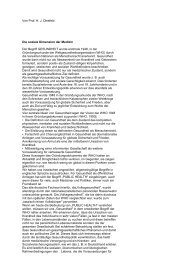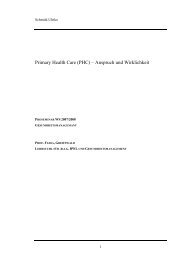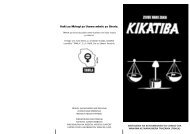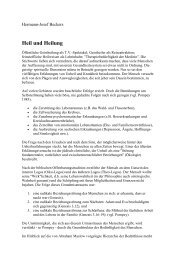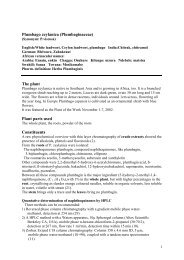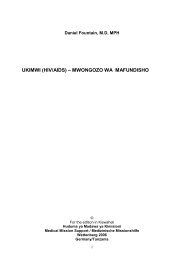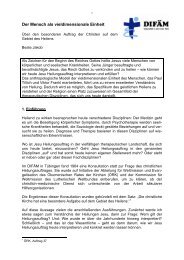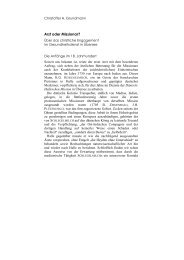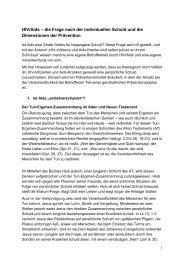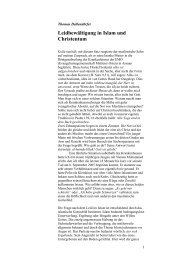(PHCII) - MMH/MMS
(PHCII) - MMH/MMS
(PHCII) - MMH/MMS
Create successful ePaper yourself
Turn your PDF publications into a flip-book with our unique Google optimized e-Paper software.
6 and above km away from the nearest health facility. This difference is statically<br />
significant (? 2 = 140, df = 1, p < 0.001)<br />
Table 10: Distribution of respondents who had delivered at Home by Attendant<br />
assisting during delivery (n = 208)<br />
Attendant Number of respondents<br />
Trained TBA's 20 (9.66%)<br />
Untrained TBA's 33 (15.95%)<br />
Relatives 122 (58.98%)<br />
Self help 32 (15.6%)<br />
Total 208 (100%)<br />
The table shows that majority 58.94% of women delivered with Assistance from their<br />
relatives. This indicates that relatives play a major role in influencing women’s choice for<br />
place of delivery. Also the study noted that 32 (15.6%) of women had no assistant during<br />
delivery.This implies that such women are either unaware of complications they are<br />
facing or they not convinced to deliver in health units from different reasons.<br />
Table 11: Antenatal care visits and place of delivery<br />
Ante-natal care<br />
visits<br />
None<br />
1<br />
2<br />
3<br />
4 and above<br />
21<br />
(n = 400)<br />
Place of Delivery Respondents<br />
Home 12 (3%)<br />
Health units 9 (2.25%)<br />
Home 5 (1.25)<br />
Health unit 3 (0.75%)<br />
Home 26 (6.50)<br />
Health unit 9 (2.25)<br />
Home 65 (16.25)<br />
Health unit 51 (12.75)<br />
Home 96 (24)<br />
Health unit 124 (31)<br />
Total 400 (100%)




